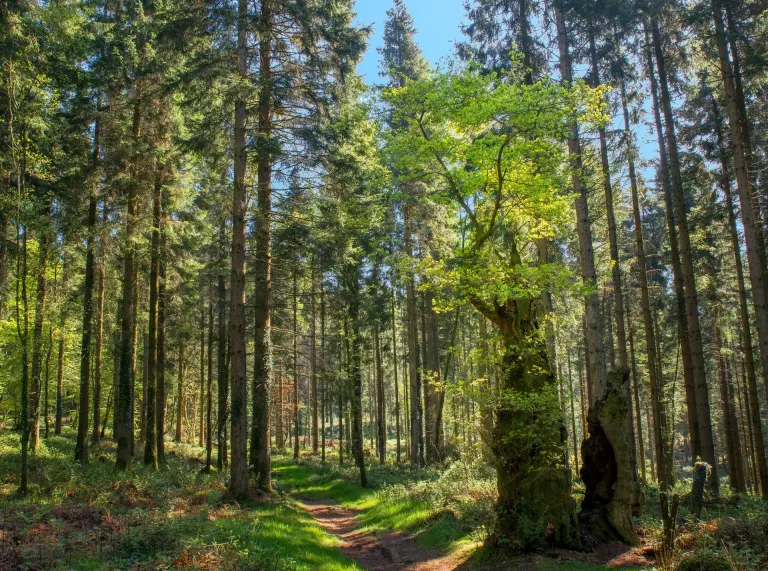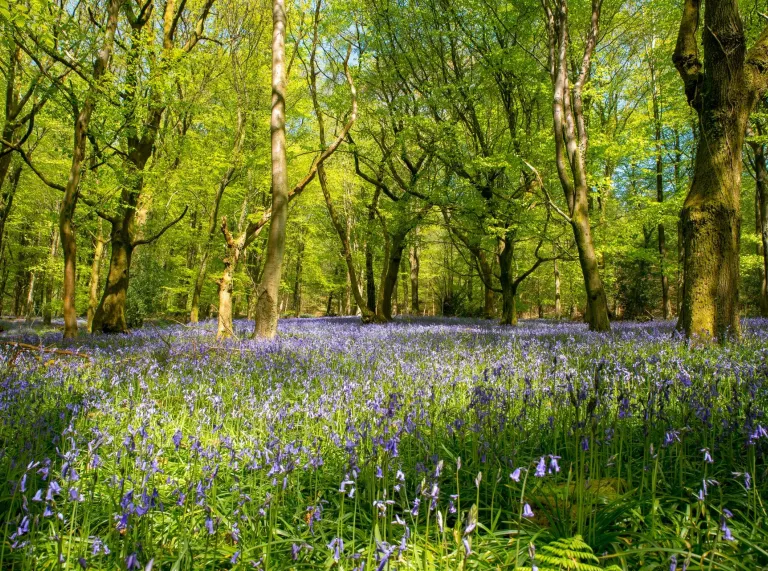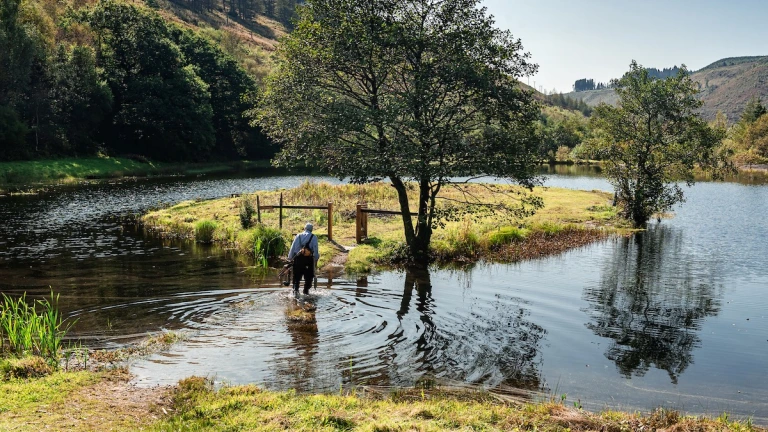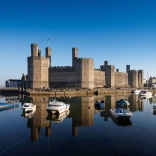How can we reconnect and restore balance with nature to best prepare for a century where the climate emergency will reshape all our lives? That was the question I was hoping to answer when I began a journey walking nearly 300 miles through the woodlands of Wales. I was inspired to walk after hearing about the new National Forest for Wales — a bold government strategy to embed an appreciation of nature and biodiversity at the very heart of what it meant to be Welsh.
The multi-year plan involved planting new forests and restoring ancient woodlands with an emphasis on nurturing native deciduous trees and working with the farming community to improve tree cover on their land. It also aimed to educate communities and schools about the importance of nature and to create a network of walks, trails and paths that will connect people to the forests and woodlands of Wales.
I was fascinated by the concept of a National Forest, and it gave me an idea for a new book project. What if I could map and walk an imaginary walking trail, a blueprint, for the Forest?
I started my walk in Wentwood Forest in South Wales, and, over the next few days, I walked through the old Roman town of Caerleon, headed west to Newport, then onto the Norman castle at Caerphilly before ending up in the coal mining communities of the Rhondda Valley.


During those walks I began to learn how we’d lost our connection to nature over thousands of years. I explored how deforestation (starting back in the time of the Celts but accelerated by the Romans and the Normans) along with intensive coal and iron industrialisation had distanced people from the natural world – ultimately relocating most of us into cities. But I also saw how some local urban and rural communities were trying to rekindle a connection to nature through new woodland planting, education schemes and walking and biking trails.
At the top of the Swansea valleys, I climbed up over the imposing Black Mountain, part of the western edge of the Bannau Brycheiniog (Brecon Beacons). Now I was entering the rolling farmland of Carmarthenshire and the beautiful but desolate Cambrian Mountain range of Ceredigion. Here, I began to discover how nature has long been revered in Welsh legend, folklore and culture.
At the foot of the Black Mountain, I visited the village where three famous 13th century herbal doctors (the Physicians of Myddfai) were said to have lived. According to legend, they were the sons of a fairy queen, the Lady of Lake Llyn y Fan Fach, who had taught them how to use nature to heal their patients. I walked through the 18th century Hafod Estate, just south of Devils Bridge, where Thomas Johnes had designed and shaped its vast woodlands and grounds as an homage to the Picturesque; an offshoot of Romanticism Movement that drew artists and writers such as JMW Turner and William Wordsworth to celebrate Wales’ natural beauty in sketches and poetry.
I kept walking north out of Ceredigion, up the Wales Coast Path to Machynlleth, where the last native-born Prince of Wales, Owain Glyndwr, established his Senedd (parliament) back in 1404 in a short-lived but gallant attempt to unite Wales and establish a singular national identity. Glyndwr's mission was realised to an extent centuries later when Wales voted to become a devolved nation in 1997, and the Senedd was established. This initiative to create a National Forest is yet another step in the development and progression of Welsh identity - this time anchored by a respect for nature.
In 1994, Costa Rica enshrined into its constitution the right of ‘every person […] to a healthy and ecologically balanced environment’. This built on a decision taken a decade before to stop the reckless deforestation of Costa Rica’s tropical rainforest by investing in large-scale afforestation and forest restoration schemes. Since then, the country has shaped its economy and its global image around environmentally conscious tourism — putting the appreciation of nature at the very heart of its national identity.
Other nations also are taking steps to put the protection of nature at the heart of policy, law, and culture. In 2008, the government of Ecuador added new articles into its constitution called The Rights of Nature Ecuador. In New Zealand, the Māori nation has worked with the federal government to secure legal rights for the Whanganui River. By doing so it helped reassert the traditional Māori world view that the land can’t be owned by any human. And in Colombia, the Supreme Court has declared the Amazon to be a legal person with rights — to be protected, conserved, and restored — and ordered the state to reduce deforestation.
Here in Wales, we already are taking important steps to connect our people to nature. In 2015, the Welsh Government passed the Well-being of Future Generations (Wales) Act — putting the sustainable development of the economy and community at the heart of policymaking. Crucially, it required all public bodies to account for their impact on future generations who will have to live with the consequences, asking them to consider decisions not just from an economic growth point of view but also in terms of their impact on the environment and nature, and on the social well-being and health of communities.
The framework, then, for shaping a national identity underpinned by achieving balance with nature already exists. It will involve rethinking many of the systems — economic, financial, legal and agricultural — that shape our current ways of living and working but, by doing so, I’m convinced that the National Forest for Wales can play an important role in helping the nation prosper while living within its natural means.
There is a Welsh phrase, dod yn ôl at fy nghoed, that means ‘to return to a balanced state of mind’. Its literal translation is, rather beautifully, ‘to return to my trees.’ It captured perfectly how I felt having walked the woodlands of Wales – and offered hope for a future Wales.
Matthew Yeomans is author of Return to My Trees – Notes from the Welsh Woodlands, published by Calon Books.





